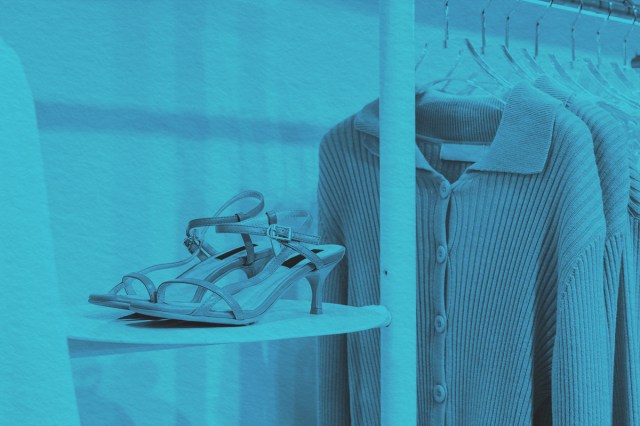
Thanks to retail holidays such as Black Friday and Cyber Monday, Thanksgiving often marks the start of the holiday shopping season. While our bellies feel full, our wallets get a little (or a lot) lighter. When you head to the store this season, or any time of year, you’re likely to see many of the same buzzwords used to attract potential customers. But despite hearing terms such as “doorbuster” and “flash sale” countless times, many of us have never stopped to think about their actual meaning. Here’s a quick guide to popular retail and advertising terms to help you stay a savvy shopper.
If you’re looking to buy a big-ticket item such as a big-screen TV, doorbusters may be your best option. A doorbuster is any product that’s been temporarily deeply discounted to lure customers into the store. This low price is often limited to a certain number of sales, further increasing the demand (thanks, Econ 101).Doorbusters are usually positioned close to the store’s front door, and are likely to sell out shortly after opening, so it’s in the customer’s best interest to arrive early. The construction of the word is based on the idea that customers will be busting down the door at opening time to get to these deals.
From the store’s perspective, the sooner shoppers arrive, the longer they’ll have to browse for items they may not have intended to buy. The term “doorbuster” was first used in a 1917 Killian’s Department Store advertisement in the Cedar Rapids Republican, which mentioned “Wednesday’s eight o’clock door-busters.”
“Flash sale” is essentially a synonym for the term “limited-time offer.” This bit of jargon dates back to the early 20th century. In 1901, an ad in North Carolina’s Charlotte News advised potential customers, “A flash sale. You best be quick.” Flash sales are short periods of time during which a product is offered at a reduced price. These bargains can be a matter of hours or even minutes during high-demand shopping days, as the word “flash” implies lightning quickness.
No, we’re not talking about tie-dyed Grateful Dead T-shirts. “Dead stock” refers to the extra stock when retailers end up with unsold goods. It generally consists of out-of-season clothing and accessories stored inside a warehouse. The term dates back to the early 17th century, when merchants had “unvendible goods.” But today, some dead stock items are beneficial to shoppers, if you know where to find them. Certain retailers (Big Lots, for example) make it their business to buy up dead stock and resell it at bargain prices. Dead stock apparel also fills thrift store racks, and you may be able to find great deals on styles only one season out of date.
The term “fast fashion” was coined in the mid-1970s, and it doesn’t have anything to do with the uniforms worn by fast-food employees. It’s a phrase used to describe apparel that is rapidly manufactured in order to keep up with the latest trends. Often these pieces of clothing are made with lower-quality materials and cheap labor to maximize efficiency and profit. Still, many people purchase fast fashion clothing because it’s trendy, affordable, and accessible, even if the pieces aren’t built to last and often end up in landfills. The term was referenced by The New York Times in the 1990s to describe the 15 days it took for Zara’s clothing to go from concept to delivery. By contrast, “slow fashion” is a movement that emphasizes sustainable textiles and ethical production practices.
Pop-up shops became popular around the turn of the millennium as a way for retailers to temporarily capitalize on unused storefronts. Each pop-up shop exists for a brief period of time — maybe a few weeks — before it closes. Customers are often attracted to the temporary nature of the store, lest they miss out. The store might be seasonal (such as for Halloween) or it might be operated by a retailer with a limited supply of a product and no need for a permanent store. Pop-up shops aren’t necessarily cheaper or more expensive than normal, though they may sell limited-edition products that you can only find there.
People love making stacks, whether it’s a neatly folded pile of clothing or a stack of silver dollar pancakes dripping with syrup. There are also stackable coupons, which allow consumers to combine multiple discounts for the lowest possible price. Some shoppers plan their purchase dates around stackable coupons. When you get a coupon, look for phrases like “limit one per customer” or similar restrictions that might indicate it’s not stackable — if you don’t see any, you’re probably good to go (but ask the cashier if you’re uncertain).
Unlike a pop-up shop, an anchor store is a retail establishment with a long-standing presence in the area. Anchor stores are often high-end shops that drive traffic to the mall or shopping center, which positively impacts adjacent retailers. “Anchor” has a usage of “a person or thing that provides stability or confidence in an otherwise uncertain situation,” and “anchor store” dates back to the 1930s, when it was coined to describe any business that played a key role in the overall success of a community. Today, it refers to any store — usually one that’s signed a long-term lease — that attracts business and promotes profitability.

















